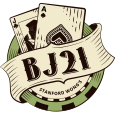Higher Baseball Totals

King Yao is the author of Weighing the Odds in Hold‘em Poker, and Weighing the Odds in Sports Betting. He uses his experience from making millions in financial derivative markets and translates it into gambling. Since he left his trading position in 2000, he has been playing poker and betting on sports. He travels to Las Vegas frequently, especially during football season.
Higher Totals Have Fewer Pushes
A higher MLB betting total is associated with a wider distribution of actual totals. Thus the chance of any specific actual total happening decreases. As the betting total increases, the chance that the actual total lands on the betting total decreases.
Since odd totals happen more often than even totals, it is fair to compare odd totals to each other and even totals to each other. Comparing odd totals, 12.4% of relevant games land on 7 (betting totals of 6.5 to 7.5), while 10.3% of relevant games land on 9. Comparing even totals, 7.2% of relevant games land on 8, while 6.5% of relevant games land on 10. The higher the total, the less likely the game is to land right on the number.
Value Depends on the Total
The next step is to transform these data into money-line differentials for half-run differences in betting totals. Look at totals of 6.5 to 7.5 to see the values of the half-runs 6.5 to 7 and 7 to 7.5.
Assume the following:
- The fair value total is exactly 7
- Based on the data, you believe 13.5% of these games will have an actual total of 7
Using the above assumptions, 43.25% of the games land below 7, another 43.25% of the games land above 7, and the remaining 13.5% are exactly 7. This balance makes over 7 and under 7 have equal value, as stated in the assumptions.
Runs Scored Probability
1-6 43.25%
7 13.50%
8+ 43.25%
Total 100%
Over 6.5 has a 56.75% chance of winning as you sum the chances of the total being 7 and 8+ (13.50% + 43.25%). In the money line, 56.75% equals -131. As a rule of thumb, the half-run around the 7 is worth about 31 cents in the money line.
Using the rule of thumb of 31 cents, if the fair value on a betting total is over 7 -120, then over 6.5 is worth -151. Over 7.5 is worth +111
Using the rule of thumb, these three lines have equivalent value:
Over 6.5 -151
Over 7 -120
Over 7.5 +111
The rule of thumb is less accurate the farther the line is from even money (+100). Rules of thumb are useful when comparing betting totals on the fly. If you have time and a computer or calculator handy, working out the math will be more exact. But if you are in a Las Vegas sportsbook or do not have much time before the game starts, then use the rule of thumb.
The push rate of 13.5%, which is the percentage of games with betting totals of 7 that landed exactly on 7, was used to create the half-run value of 31 cents. But other information exists in the form of betting totals of 6.5 and 7.5. The percentage of all games with totals from 6.5 to 7.5 that landed exactly on 7 was 12.4%. If 12.4% is used instead of 13.5%, the value of a half-run off the 7 is 28 cents.
You now have enough information to determine which sportsbook offers better value depending on whether you want to bet the over or the under.
Sportsbook A Sportsbook B
Over 7 -130 Over 7.5 -105
Under 7 +110 Under 7.5 -115
Assume you want to bet the over. Although you are laying less vig by taking over 7.5 at -105 compared to over 7 at -130, it is not worth the risk for the 25 cents you save on the vig. If you are going to bet the over, the over 7 -130 is a better value than over 7.5 -105. The equivalent of over 7 -130 is over 7.5 +101. (Using money line cents math, -130 plus 31 cents = +101.)
On the other hand, if you like the under, you should bet under 7.5 -115. The 7 is worth 31 cents, so under 7 +110 is equivalent to under 7.5 -121. (+110 minus 31 cents = -121.)
An example with totals of 10 / 10.5
Suppose the betting totals are 10 and 10.5 at different sportsbooks, but with the same vigs as the previous example.
Sportsbook A Sportsbook B
Over 10 -130 Over 10.5 -105
Under 10 +110 Under 10.5 -115
The half-run value off the 10 is worth 14 cents. In this case, taking over 10.5 -105 has better value than over 10 -130. Over 10.5 -105 is equivalent to over 10 -119. (-105 plus - 14 = -119.) If you want to bet the over, take the 10.5 in this example.
If you like the under, take under 10 +110. Under 10 +110 is equivalent to under 10.5 -104. (+110 plus -14 = -104.) In order to take under 10.5 at Sportsbook B, you must lay -115. Under 10 +110 has better value.
Notice the difference in these two examples. Although the vig differences are the same in the two games, the over bet with more value in the first example is over 7 -130, but in the second example, it is over 10.5 -105. The difference in the half-run value between the 7 and the 10 causes a different optimal bet. Consider both the vig difference and the value of the half-run to determine which line provides better value.
Conclusion
There is a higher chance of a game landing on an odd total. There is a lower chance of a game landing on a specific total when the betting total increases. We calculated the value of a half-run for two sample betting totals. You can use this information to choose among different betting totals.
This is part of an occasional series of articles.
Excerpted with permission from the e-book version of Weighing the Odds in Sports Betting by King Yao, edited for this format.











Please log in or register to leave a comment